There was a time when healthcare meant clipboards, crowded waiting rooms, and long phone calls that tested your patience.
Now in 2026, things have flipped: smartwatches track your vitals, video calls replace clinic visits, and digital health platforms keep everything running smoothly.
Tech’s cool, sure, but the real story here is about trust and access.
The global digital health market is projected to hit $639 billion by 2026, and that growth says a lot about where the world’s heading. People are done waiting weeks for appointments or juggling endless paperwork. They want care that fits around their lives.
And investors?
They’re hunting for platforms that deliver scalable growth, measurable ROI, and long-term market potential.
It’s a whole new kind of healthcare: smarter, faster, and way more human.
In this blog, we’ll look at the key features of digital health platforms in 2026, the ones that are changing patient experiences, attracting investors, and setting new standards for modern care.
Table of Contents
Top 10 Features of Digital Health Platforms in 2026
Let’s be honest, healthcare apps used to feel like clunky filing cabinets with a search bar. But now, digital health platforms have completely reinvented themselves. They’re companions in everyday health, keeping patients connected, doctors informed, and investors very interested.
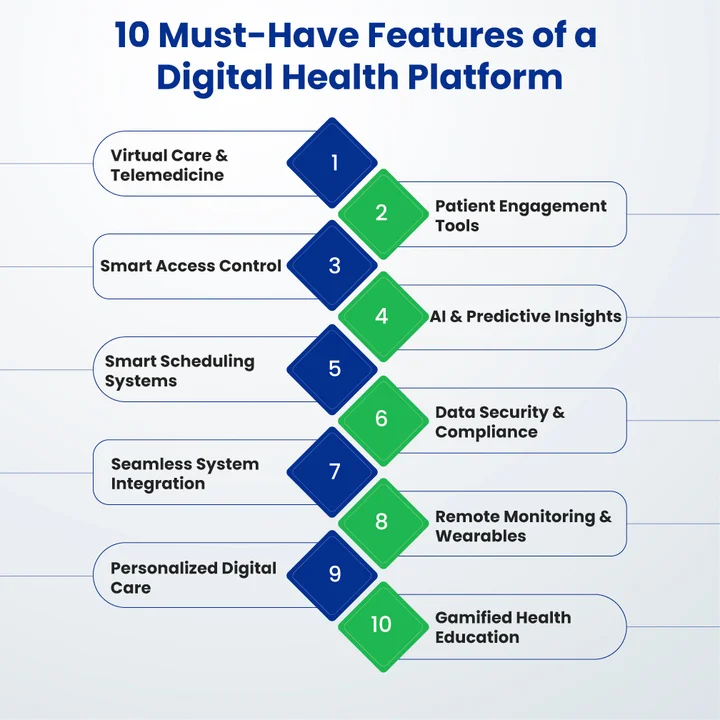
So, what’s actually standing out this year?
Here’s the breakdown:
1. Telemedicine and Virtual Care Capabilities
Sitting in traffic just to spend five minutes with a doctor feels ridiculous, right?
Telemedicine in 2026 changes that.
Imagine FaceTiming a doctor, but smarter; your app can run simple diagnostics, suggest next steps, and even connect to your smartwatch.
You can book, consult, and get prescriptions without leaving your sofa (yes, even with Netflix in the background). This level of convenience and personalized care makes managing health simple and accessible for users.
For doctors, it means reaching more patients without burning out.
And for investors?
Platforms that scale efficiently, stay compliant, and handle growing patient loads are especially attractive to investors, offering strong ROI and long-term growth potential.
2. Patient Engagement and Experience Tools
If telemedicine is the backbone, then patient engagement is the heart of digital health platforms.
But here’s the thing: engagement today goes way beyond basic notifications. Patients want apps that listen, respond, and actually help them stick to their care plans.
It works a bit like Duolingo, but for your health. You get nudges, reminders, and little wins that actually make managing health kind of… fun.
Doctors get real-time insights, and the more users stick around, the more these platforms demonstrate predictable retention.
That’s a gold star for investors, signaling strong growth potential and scalable impact.
3. Role-Based Access Control
Healthcare data is sensitive stuff.
In 2026, digital health platforms are smarter about who can see what.
Role-based access control makes sure doctors, nurses, admins, and patients only get access to the info they actually need.
So, a nurse can update your vitals, a doctor can tweak your treatment plan, and you can check your own records, without anyone accidentally peeking where they shouldn’t.
It’s like a club with different wristbands: everyone’s in, but the VIP areas stay VIP.
This setup keeps care safe, organized, and stress-free for healthcare teams, while letting patients feel in control of their information.
Investors value platforms that manage access efficiently and comply with regulations, because systems that stay secure and scalable are easier to grow and more likely to deliver solid returns.
4. AI and Predictive Analytics
AI in digital health is like that quiet genius in every movie, the one who spots the problem before anyone else even notices.
Modern healthcare platforms now use predictive analytics to catch problems long before they turn serious.
Imagine your app giving you a heads-up like,
“Hey, maybe skip that extra coffee; your heart rate’s been a bit high lately.”
Hospitals are using predictive health models to forecast patient demand, plan staffing, and even personalize treatment paths.
And from an investor’s seat?
AI means efficiency, scalability, and measurable impact rolled into one. Platforms that use predictive insights are often leaner, more accurate, and poised for long-term growth.
That’s a hard combo to beat.
Still unsure how to keep your users engaged? Bring AI into your digital health app and make every interaction count.
5. Scheduling and Access Management Systems
Let’s be honest,
Booking a doctor’s appointment used to feel like trying to get concert tickets for a sold-out show.
Click, refresh, wait…repeat.
But not anymore; digital health platforms finally got it right.
Scheduling systems are now smooth, flexible, and smart. Patients can grab time slots instantly, doctors can update their calendars on the go, and admins can keep an eye on everything from one dashboard.
No more back-and-forth calls or double bookings; just tap, book, and you’re good to go.
At the same time, platforms that keep schedules flowing without glitches signal to investors that the system can handle growth and stay organized, making it a smart and dependable investment.
6. Security, Compliance, and Data Privacy
Now, let’s talk about the not-so-glamorous but super important part, security.
Be honest:
Would you hand your medical history to an app you don’t fully trust?
Probably not.
And that’s exactly why data protection has become non-negotiable in 2026.
Digital health platforms are built like virtual fortresses with encrypted systems, multi-factor authentication, and compliance with healthcare data security standards like HIPAA and GDPR.
Patients want peace of mind knowing their data isn’t floating around the internet. Investors see that too; apps that keep data safe and follow regulations reduce risk and show long-term stability and trustworthiness.
It’s simple: trust drives adoption, and adoption drives returns.
7. Interoperability and Integration with Healthcare Systems
You know that awkward moment when two apps refuse to talk to each other?
That used to be healthcare’s biggest headache. But not anymore.
Modern connected health platforms now integrate smoothly with electronic health records (EHRs), wearable tech, and even pharmacy systems.
And to make that kind of smooth connection possible, it helps to have reliable mobile app development services on your side, the kind that make sure your integrations actually work where it counts, not just in theory.
It’s like getting all your gadgets to finally play nice at the same dinner table.
This level of interoperability means smoother workflows for doctors and fewer “let me check your file again” moments for patients.
Plus, it boosts the overall ROI of digital health platforms by cutting down on redundancy and errors.
Investors value platforms that can link different systems efficiently, as they’re easier to grow, less prone to mistakes, and more likely to succeed over time.
8. Remote Patient Monitoring (RPM) & Wearables
If there’s one trend that’s taken off faster than a viral TikTok, it’s remote patient monitoring.
Smartwatches, patches, and sensors are medical allies. They track everything from blood pressure to oxygen levels and send the data straight to a healthcare team.
These real-time insights mean fewer hospital visits, quicker interventions, and a smoother patient journey overall.
And from a business point of view?
RPM systems create a steady loop of engagement that both users and providers love.
For investors, platforms that keep patients engaged and deliver consistent data demonstrate scalability, steady adoption, and clear ROI.
9. Digital Therapeutics & Personalized Care Plans
Here’s where digital health gets personal, literally.
Digital therapeutic tools now use data from wearables, apps, and patient inputs to design care plans that actually fit each individual’s needs.
It’s kind of like having a healthcare playlist, customized for your body’s rhythm.
From managing diabetes to improving sleep or supporting mental well-being, these tools have become essential parts of healthcare technology platforms in 2026.
Patients get advice that’s practical, easy to follow, and customized to their daily routines.
And investors notice platforms that achieve this level of customization because it signals consistent engagement, user loyalty, and potential for growth over time.
10. Gamification & Educational Content
Healthcare doesn’t have to feel like homework, and that’s where gamification steps in.
What if you could earn tiny achievements for hitting your fitness goals or unlocking new health lessons as you progress?
It sounds small, but it works.
People love a little motivation, and tools that turn healthcare into something you actually enjoy using are seeing massive engagement boosts these days.
And many apps now blend gamified challenges with bite-sized educational content.
Like short videos, quizzes, or daily tips that help users understand their conditions and make smarter choices, minus the medical jargon.
When users keep coming back and interacting regularly, it also tells investors that the platform has staying power, repeat engagement, and room to grow, making it a win for both patients and stakeholders.
What Do Investors and Users Prioritize Most in 2026?
In 2026, priorities in healthcare platforms have shifted. People now expect tools that fit naturally into their routines, give them real control over their health, and make every interaction feel meaningful. And when we look at the other side, investors want platforms that show clear growth potential, stay reliable under pressure, and deliver consistent returns.
Below is a quick look at what both users and investors care about most:
- Convenience and Access: Patients want appointments, consultations, and health updates that fit around their day.
- Practical and Personalized Care: Tools that guide users with advice they can actually follow help keep engagement high.
- Security and Compliance: Safe data handling builds patient trust and reduces risk, which investors notice immediately.
- Growth and Scalability: Platforms that handle more users smoothly signal a strong ROI to investors while keeping the patient experience reliable.
- Retention and Engagement: High repeat usage shows patients value the experience, giving investors confidence in adoption and revenue potential.
- Efficiency and Results: Workflows that make life easier for providers and patients demonstrate measurable value to investors.
Wrapping Up
All in all, the features of digital health platforms are doing a lot of heavy lifting. From telemedicine to predictive analytics and role-based access control, these tools help patients stay on track and doctors stay organized. It’s easy to see why users and care teams are excited.
At the same time, investors notice platforms that keep users engaged, scale smoothly, and follow security and compliance rules, which signals strong ROI and future growth potential.
Using a simple digital app cost calculator gives you a rough estimate of what building a mobile health platform with all these features might cost, helping you see the bigger picture without getting lost in numbers.
In short, the platforms that succeed are the ones that strike the right balance: they earn patient trust while delivering predictable results for investors.
And in a busy, unpredictable world, that’s exactly what people need.
Frequently Asked Questions (FAQs)
2. How Can Patient Data Analytics Shape Treatment Plans and Improve Outcomes?
Patient data analytics lets you spot trends, identify health risks early, and adjust treatments for each patient’s needs. This helps you make better decisions, reduce mistakes, and improve overall care, while also providing insights to support hospital planning.
3. How Do RPM Systems Keep Patients Engaged With Their Health?
Remote patient monitoring systems track vitals, activity, and symptoms continuously. This helps you stay connected to patients, encourages them to follow their care plans, and allows quick responses if any issues arise, keeping patients involved in their own health journey.
4. How Do HealthTech Platforms Make Clinical Workflows More Efficient?
Healthtech platforms bring patient information together and handle repetitive tasks so you can spend more time on care. They ensure the right data reaches the right person at the right time, helping your team reduce mistakes and save time.
5. How Is Predictive Analytics Helping Providers Stay Ahead With Preventive Care?
Predictive analytics highlights potential health problems before they become serious. Using past and current data, you can anticipate patient needs, plan resources better, and create care plans that prevent complications and improve outcomes.
Stop wasting cash on digital health apps that fail to engage users.


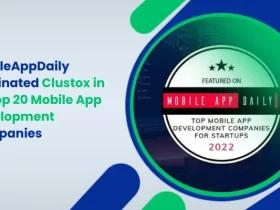
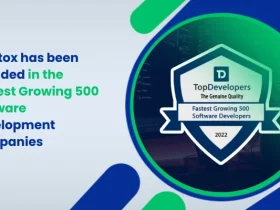
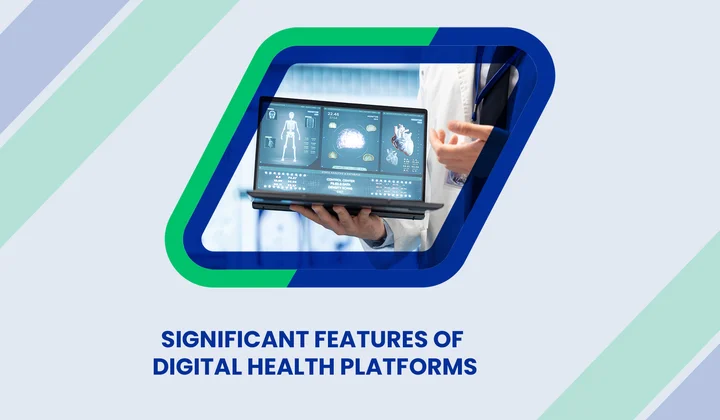
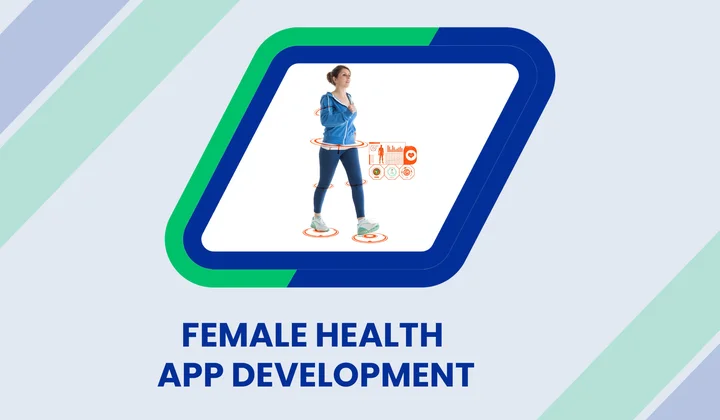
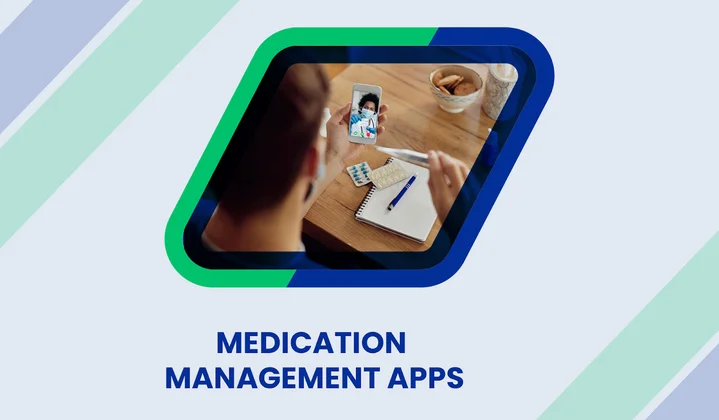
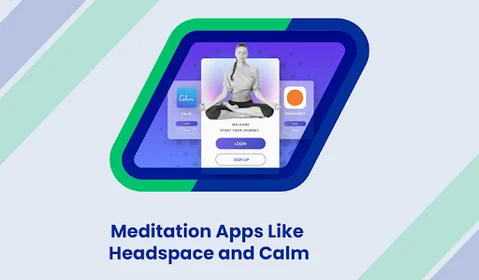
Share your thoughts about this blog!